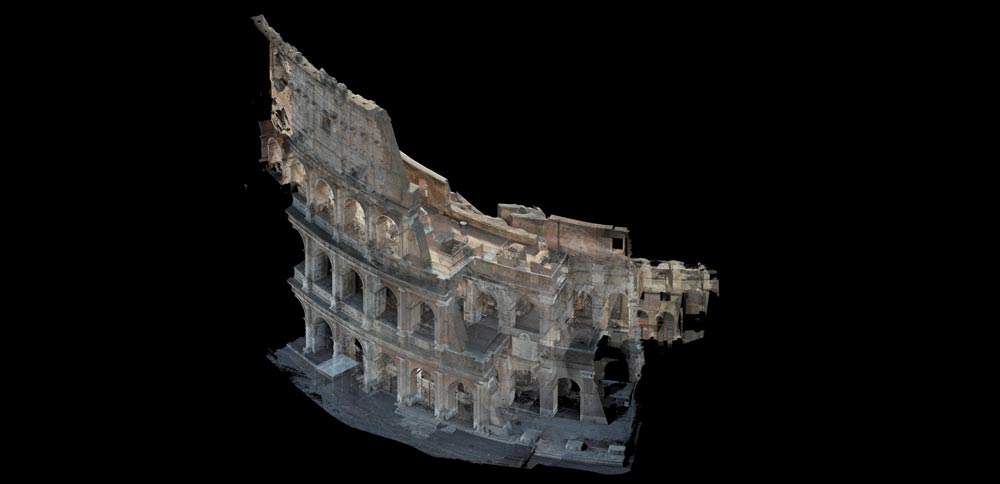Rome, coming soon the first complete 3D geometric survey of the Colosseum
In Rome, by the spring of 2023, a global 3D geometric survey, with integrated geomatic methodologies, of the Colosseum, until now affected by surveys dedicated to individual portions and/or themes, will be available for the first time. This is a project of great importance for the protection of the monument and will be a fundamental reference for any intervention of study, maintenance and restoration, and valorization.
The project, drawn up by the Colosseum Archaeological Park (sole proceeding manager Federica Rinaldi) has seen leading companies, each with specific skills, in the field engaged for several months: it is a temporary grouping that won a public tender issued by Invitalia and consists of Consorzio Futuro in Ricerca CFR of Ferrara (mandatary), which has the scientific coordination of the activities, Geogrà Srl of Sermide, ETS Srl and Janus Srl of Rome). Experts in the various disciplines, scholars and professionals were also involved to support a particularly complex documentation activity.
For the integrated three-dimensional digital survey of the Colosseum, in fact, topographic, laser scanner, terrestrial and drone technologies, photogrammetric acquisitions and direct surveys are being used simultaneously, which will allow a detailed description of the actual state of the monument, with the georeferencing of each single point.
This database, referring to the Colosseum and collected in multiple multidisciplinary three-dimensional models, will make available to historians, archaeologists, architects, restorers, diagnosticians and experts from different disciplines a novel knowledge base for the study and verification of the different historical and evolutionary phases, as well as knowledge of the state of conservation of the monument’s surfaces and structures, also in anticipation of the additional and already planned seismic risk verifications.
The 3D point cloud survey will also form the geometric-morphological basis in the Historical/Heritage Building Information Modeling ( HBIM) environment, the information development of which will enrich the geometric model with information related to materials, construction techniques, superfetations, degradation states and precisely structural condition of the monument.
Finally, the survey will be able to constitute the digital support for future restitutions for scientific and educational purposes of the original architectural decoration thanks to the provision included in the Tender Specifications for the survey of fifty notable artifacts, including capitals, columns, transennae, cavea steps, tripods.
The activity is coordinated by the staff of the Colosseum Archaeological Park and involves archaeologists, architects, and restorers, with the aim of creating a school case for both surveying methodologies and the use of BIM in the management and maintenance of historical-archaeological assets.
“For the Colosseum Archaeological Park,” says Alfonsina Russo, director of the Colosseum Archaeological Park, “the care of monuments represents the central and founding aspect of its activities, and among the many interventions carried out for this purpose, this project proves to be of fundamental importance, as it will allow, through a survey for the first time integral and three-dimensional of the Flavian Amphitheater, to achieve even more incisive results for the knowledge and protection of a monument, known throughout the world and heritage of humanity. For the achievement of this result I thank the officials and collaborators of the PArCo, whose uncommon dedication and professionalism I was once again able to appreciate. It will thus be possible, among other things, to fully comply with the regulatory innovations in the field of restoration and maintenance contracts, which provide from 2025 for the obligation to design in BIM mode for interventions exceeding one million euros.”
 |
| Rome, coming soon the first complete 3D geometric survey of the Colosseum |
Warning: the translation into English of the original Italian article was created using automatic tools. We undertake to review all articles, but we do not guarantee the total absence of inaccuracies in the translation due to the program. You can find the original by clicking on the ITA button. If you find any mistake,please contact us.





























